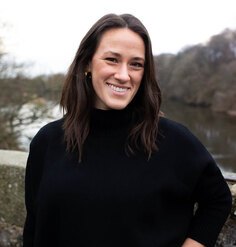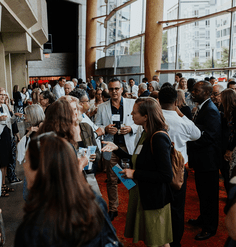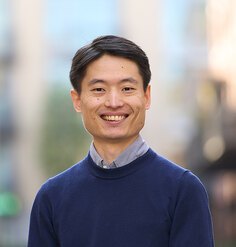Empowering Communities Through Design: Kendra Hyson

Kendra Hyson is a 2015 Olmsted Scholar from the University of Arizona and a Washington, D.C. native. Following her return to the East Coast, LAF caught up with Kendra to learn about her new role as Program Coordinator at the Neighborhood Design Center.
What is the Neighborhood Design Center and what do you do there?
The Neighborhood Design Center (NDC) is a nonprofit organization that provides access to pro bono design services in traditionally underserved communities throughout the city of Baltimore and Prince George’s (PG) County, Maryland. NDC was established in 1968 in response to a charge put forth by Urban League Executive Director Whitney Young at the 100th Convention of the American Institute of Architects, which occurred just two months after the assassination of Dr. Martin Luther King and the ensuing riots: “You share responsibility for the mess we are in. Get involved in helping cities rebuild or risk the consequences.”
At NDC we believe that everyone should have access to great design; the design process should be inclusive and community-driven; social justice, environmental sustainability, and community character are at the heart of developing healthy equitable neighborhoods; and the most productive partnerships come out of unlikely alliances. The NDC team includes landscape architects, architects, social designers, natural resource specialists, financiers, and administrative staff. NDC’s main office is in Baltimore and I’m a Project Coordinator in the Hyattsville, Maryland office.
My role is landscape architecture-focused, and a large portion of my work includes community engagement. I coordinate volunteer professionals on projects and facilitate engagement through meetings and workshops. Sometimes, I also get to do design work.
Much of our community engagement process is predicated on helping our clients discover what it is they really want to gain out of a particular project. We highlight ways in which a project can achieve the desired environmental, social, and economic goals while staying true to the community’s character and sense of place. Most of the Hyattsville office’s projects are in PG County, and our clients and partners include local government officials, schools, municipalities, the PG Department of the Environment, Department of Public Works and Transportation, and other nonprofit organizations.
What projects are you currently working on?
I currently have around 15 projects, all in varying phases and with different objectives. There are some standout projects that have interesting components and stakeholders. For example, we are working with Community Forklift, a nonprofit reuse center for home improvement supplies. They want to transform their existing parking lot into a “Reuse Art Park”. The project is at the kick-off site for the new Port Towns Eco-District and will include a parking lot made entirely of permeable pavers, an art walk showcasing art made from reused/recycled material, two large rain gardens, and a focus on environmental preservation. The Port Towns Eco-District and the Reuse Art Park project will be highlighted at this year’s DesignDC (2017) conference.
What do you like most about your job?
Besides the amazing people I work with, I love connecting with communities. The collaborative approach involved in our process allows for more meaningful and long-lasting design. Traveling down the path of discovery with the client is the part that is most enjoyable for me. I live for those moments when you and the client are collaborating and your ideas and intentions start to align and move full steam ahead towards one synthesized design. I love those aha moments.
I also enjoy the fact that my job has so much diversity. Diversity of project type, scale, community, landscape — no two projects are ever quite the same. That variety keeps me excited about going to work every day. One day I am developing design plans and cost options for a community memorial garden; the next day I am conducting a tree inventory with a Park and Planning forester or attending a community meeting for an urban farm; and other days I am out conducting site visits at schools to help create planting plans to aid in campus sustainability programs. Never would I have imagined finding a position that so perfectly aligns with my personal and professional goals as a landscape designer. I feel very lucky to be a part of the NDC team and I am extremely grateful to be doing the things I love.
How can other designers get involved with the Neighborhood Design Center?
So glad you asked this question! NDC is always looking for volunteers. Our volunteers are a fundamental part of our pro bono design work and really help to define our impact as an organization. Our Community Design Works program is a wonderful opportunity for designers and related professionals (architects, landscape architects, urban planners, environmentalists, graphic designers, etc.) to participate in the community engagement design process. Feel free to check out our website for information about our current projects and upcoming volunteer opportunities.
What else are you up to now that you are back in the Washington, D.C. area?
Outside of working for NDC, I am really focused on becoming more deeply connected to the design networks here. There are so many new and interesting things related to landscape architecture happening in the city these days that I am really focused on getting back into the mix. I’m hoping to become more involved with diversity and equity initiatives taking place around the city, too.
As far as what I enjoy most, I am really just enjoying being back home. It seems as though there are so few native Washingtonians here anymore that I take much pride in being a true local. With all of the change and development taking place in the city, I feel that I have a skill set and perspective both as a landscape architect and a local that is beneficial to the city and its progress. It is my hometown. My family is here, my memories are here, and I will always have a special place in my heart for D.C. They say charity begins at home, so I figured why not begin my journey as a landscape architecture professional here. At the end of the day, I just want to help make a difference in my own community, and hopefully, that impact spreads.















